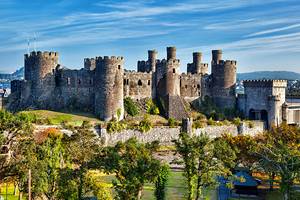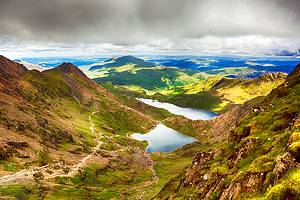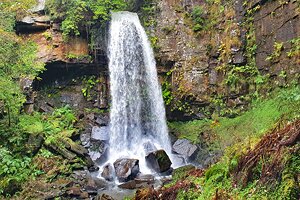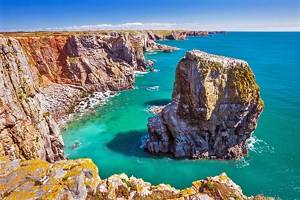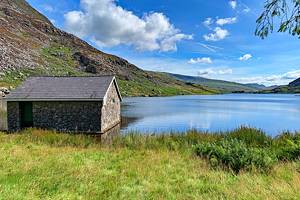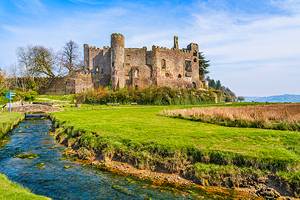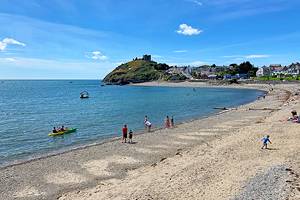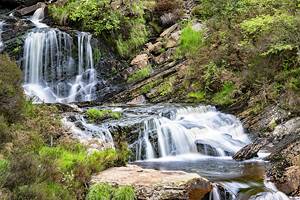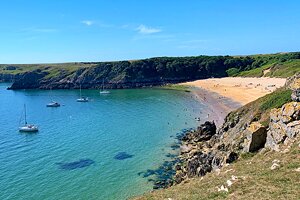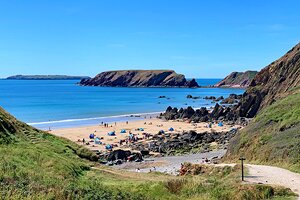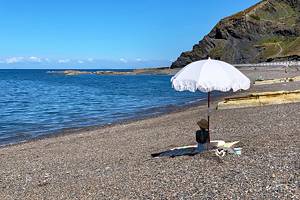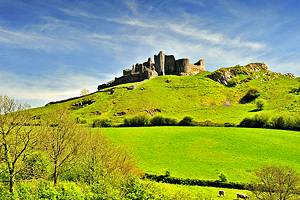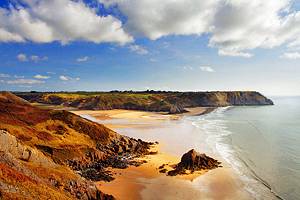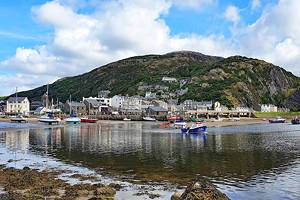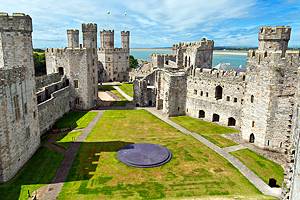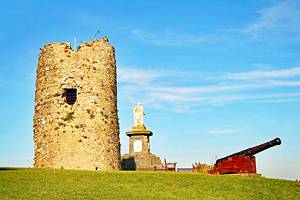Tourist Attractions on the Pembrokeshire Coast, Wales
Wales boasts some of the most spectacular coastlines in all of Britain. This is especially true around the rugged Pembrokeshire Peninsula, an area that's widely regarded as one of the best places to visit in Wales for tourists on the lookout for a memorable vacation experience.
Jutting out into the Irish Sea, the southwesterly tip of Wales is an area just begging to be explored, whether on foot, by bike, or by car. It's also a great place from which to discover the rest of West Wales, including lovely Carmarthenshire.
Together, these two beautiful counties are home to numerous attractions. Fun things to do on the Pembrokeshire Coast include exploring historic castles and fortresses, touring countless churches and cathedrals, as well as visiting the region's many quaint old fishing harbors and villages.
For the truly adventurous traveler seeking a totally unique experience, check out the numerous intersting places to stay, whether for a night or a week. Everything from little farm cottages, classic old lighthouses, gypsy caravans, and even vintage railcars perched on cliff tops have been transformed into unique accommodations.
Find out more about this beautiful region, and the best places to visit, with our list of the top attractions on the Pembrokeshire Coast of Wales.
- Pembrokeshire Coast National Park
- The Pembrokeshire Coast Path National Trail
- Pembroke Castle
- Carmarthen: Merlin's Birthplace
- Dylan Thomas' Laugharne
- The Town of Tenby
- Carew Castle and Tidal Mill
- Manorbier Village and Castle
- St. Davids Cathedral
- Goodwick and Fishguard
- Cardigan and the National Wool Museum
- Caldey Island
- Map of Tourist Attractions on the Pembrokeshire Coast, Wales
Pembrokeshire Coast National Park
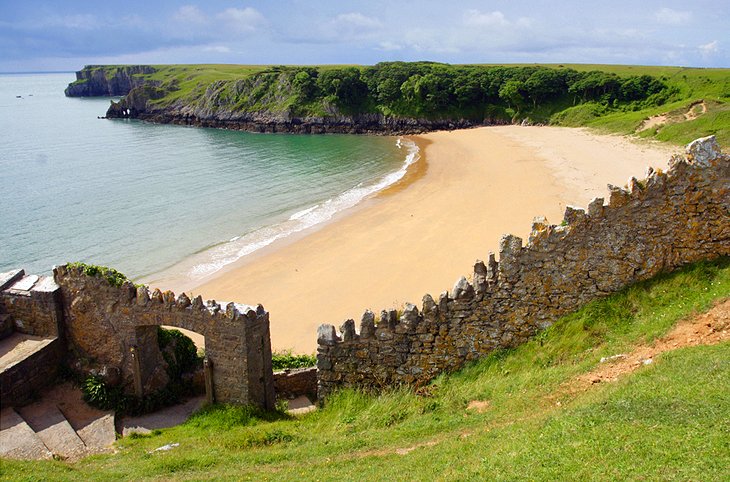
Pembrokeshire serves as an excellent base from which to explore the scenic southwest coast of Wales. This long stretch of rugged shoreline is widely considered to be one of the most attractive coastlines in all of Britain.
Fortunately, much of this spectacular coastline is protected as Pembrokeshire Coast National Park. Established in 1952 and covering an area of 629 square kilometers, this must-see landscape is notable as Britain's only coastal national park.
Some of the biggest draws for tourists are the park's numerous sandy beaches. All told, there are more than 50 of them to be explored, ranging from quiet, secluded spots to busier beaches that are popular with families. Add to this its many remote bays and islands, and it's not difficult to see the appeal. Further enhancing the visitor experience in this magical landscape is the fact that it's home to an abundance of wildlife, including rare sea birds such as puffins or razor-billed auks.
One of the most popular things to do here is hiking, thanks in large part to the magnificent Pembrokeshire Coast Path. Other fun outdoor activities include rock climbing and sea kayaking.
You'll also want to include the park's visitor center in Haverfordwest on your Pembroke itinerary. You can gather information before your hike, as well as shop for souvenirs. Other information centers are located in St. David's, Tenby, Fishguard, and Milford Haven.
Address: Llanion Park, Pembroke Dock, Pembrokeshire, Wales
Official site: www.pembrokeshirecoast.wales
The Pembrokeshire Coast Path National Trail
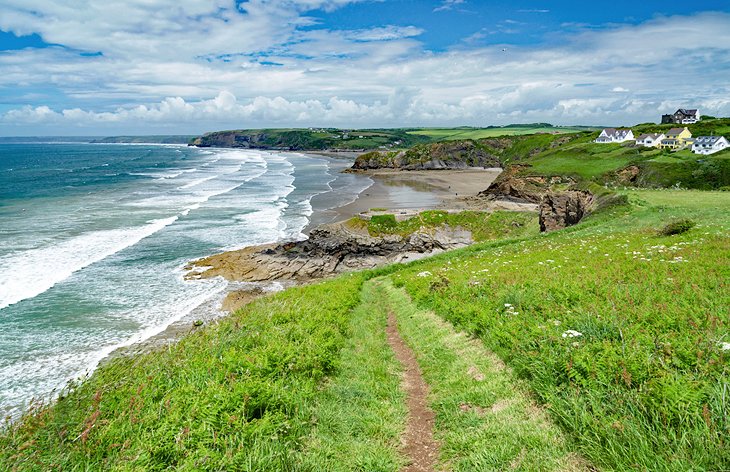
A particularly delightful way to explore this beautiful Welsh region is via the superb Pembrokeshire Coast Path. Laid out in 1970, this spectacular National Trail covers a distance of nearly 300 kilometers along the coast, stretching all the way from Amroth in the south to its northernmost point in St. Dogmaels near Cardigan.
Most of the path is located within the Pembrokeshire Coastal National Park itself. While most sections of the path are easy to walk and located on cliff tops, the presence of so many attractive beaches just waiting to be explored makes it necessary to have a degree of fitness if you're planning on making the descent in order to explore the beaches themselves.
While walking the entire route would take anywhere from 12 to 14 days, many tourists to the region will break their adventure up into bite size hikes, or even manageable day trips. If that sounds like you, there are plenty of great accommodation options to choose from, including everything from quaint B&Bs to old gypsy caravans and even castles.
For those seeking to explore farther afield, the Pembrokeshire Coast Path connects to the Wales Coast Path. This epic 1,400-kilometer hike connects Queensferry to Chepstow, and basically covers the entire Welsh coastline.
Official site: www.pembrokeshirecoast.wales/coast-path/
Pembroke Castle
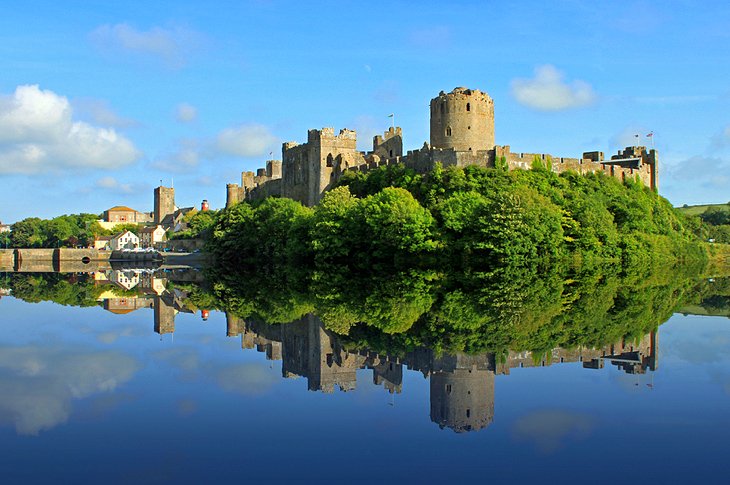
Pembroke Castle is not only the most imposing Norman coastal fortress in Wales, it's also something of a movie star, having made its debut in the romantic movie, Me Before You. Towering on the crest of a hill near the town after which it's named, the fortress was built in 1090 by Arnulf, Earl of Pembroke.
And this privately-owned castle's setting is certainly spectacular, boasting magnificent views of the surrounding area from atop its massive, round keep. Adjoining the keep are the Prison Tower, the Norman Hall, and the North Hall, from which a staircase leads down into the huge natural cavern known as the Wogan.
On-site exhibits include the story of the many Earls of Pembroke, a medieval banquet, as well as displays focusing on the Civil War battle that took place here between Cromwell's troops and the Pembroke Royalists. There's also an exhibit that tells the history of the famous Pembroke Yeomanry.
And for those wanting to have the ultimate wedding backdrop, the castle is licensed for civil weddings, too, with reception space available for up to 60 guests. A café and gift shop are also located on-site.
Address: Pembroke Castle, Pembroke, Pembrokeshire, Wales
Official site: http://pembroke-castle.co.uk/
Carmarthen: Merlin's Birthplace
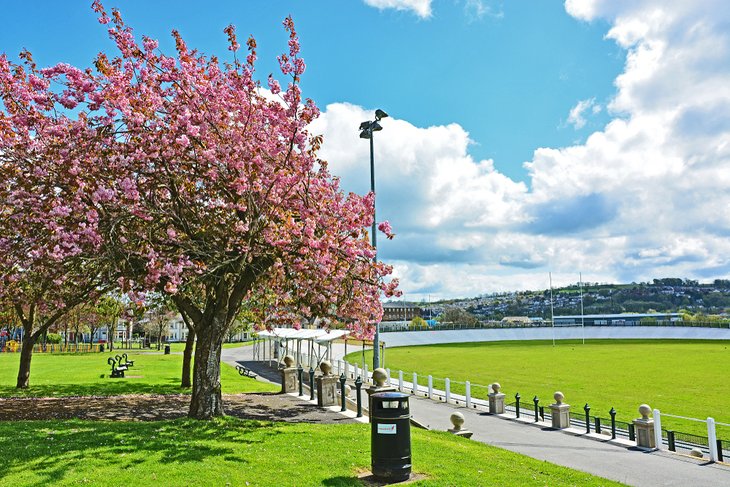
According to legend, Carmarthen, the oldest town in Wales, is the supposed birthplace of the Celtic magician Merlin of Arthurian legend. Celebrating this connection are numerous references to the great wizard across the town, including statues and the Merlins Walk shopping center.
Located on the River Towy, just 14 kilometers inland from the bay of the same name, it's also the county town of Dyfed, which consists of the counties of Carmarthen, Pembroke, and Cardigan. It's also well known for once having been an important market town and seaport.
Visitors interested in sightseeing can admire the 14th-century parish church of St. Peter, the 14th-century town wall and gatehouse, as well as the ruins of Carmarthen castle. The elegant Guildhall, dating from 1766, along with the Carmarthenshire County Museum, are important attractions well worth visiting.
Address: Abergwili, Carmarthen, Carmarthenshire, Wales
Dylan Thomas' Laugharne
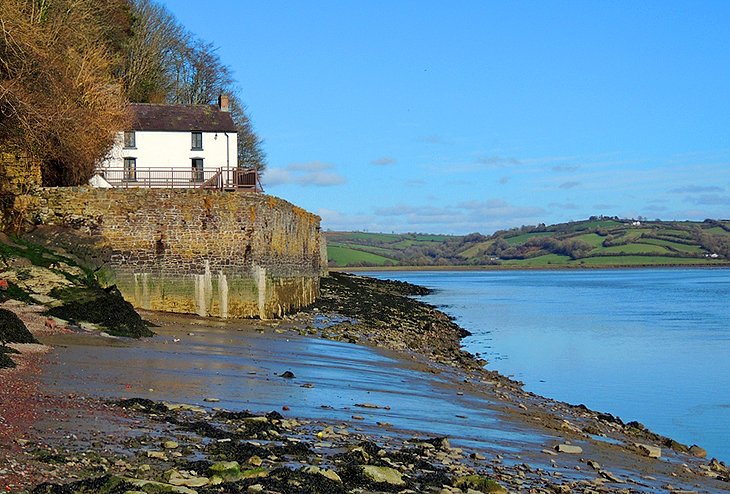
The small market town of Laugharne on the Taf estuary is famous for its excellent cockles, as well as its many well-preserved 18th-century buildings. These include the historic Town Hall, which was built in 1746.
Dylan Thomas, undoubtedly the most famous Welsh poet, called this sleepy nest of 400 souls "the strangest town in Wales" when he and his wife moved into the slate-roofed Boat House above the bay in 1938.
Thomas remained here until his death in 1953, and his boathouse home has since been converted into a museum with a superb terraced tearoom. You can even visit the writing shed in which he did much of his work. He was buried in the village cemetery, and his simple gravestone is easy to find.
Another area attraction is Laugharne Castle. This imposing fortress dates back to medieval times and saw active service during the Civil War. Although it has since fallen into ruin, its quaint garden gazebo remains.
Address: Dylans Walk, Laugharne, Carmarthenshire, Wales
Official site: www.dylanthomasboathouse.com
The Town of Tenby
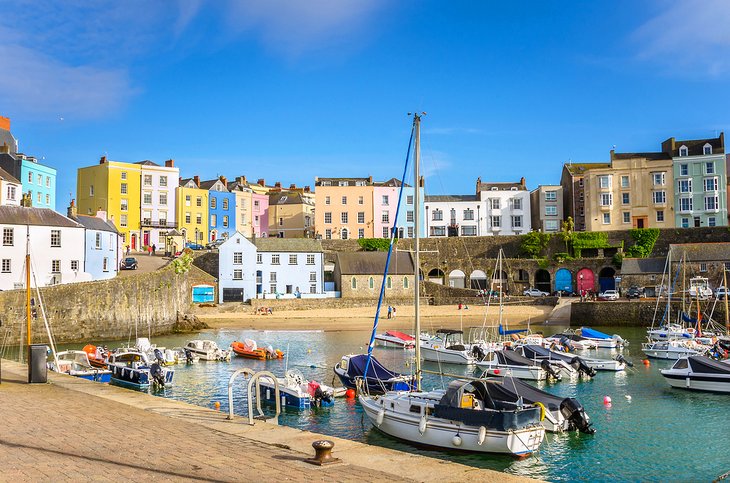
Tenby, still with its ancient town walls intact, lies on a rocky peninsula at the western end of Carmarthen Bay. At the turn of the century, artist Augustus John praised this charming seaside resort as being "so restful, so colorful, and so unspoiled" due to its picturesque harbor edged with attractive pastel-colored houses.
It also boasts two beautiful sandy beaches, charming narrow alleys, and the carefully restored 15th-century Tudor Merchant's House. St. Mary's Church, the largest parish church in Wales, is also worth a visit.
You should also make time to visit the interesting Tenby Museum and Art Gallery. This fascinating museum is home to a collection of interesting artifacts relating to the town's past, along with a well-stocked gift shop.
Address: Castle Hill, Tenby, Pembrokeshire, Wales
Official site: www.tenbymuseum.org.uk
Carew Castle and Tidal Mill
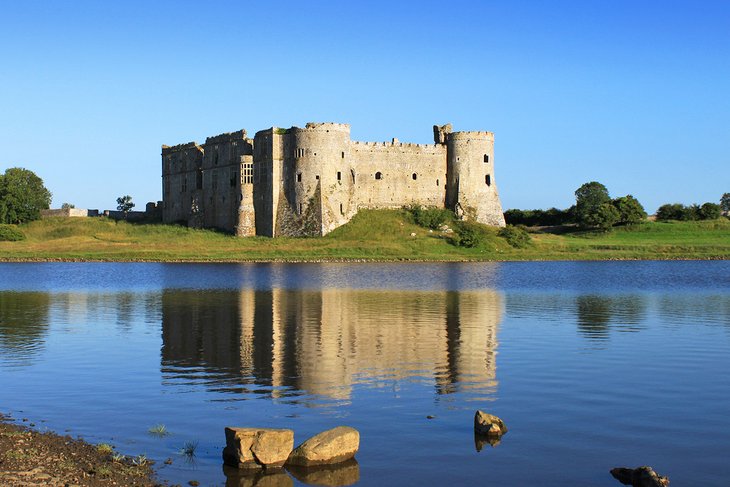
The impressive ruins of 13th-century Carew Castle stand on one of the many hills surrounding Milford Haven and its adjacent 23-acre millpond. Its beautifully carved high cross dates from the 11th century, and standing at the castle's entrance is a fine example of 11th-century Welsh art, the patterns in its 4.2-meter-high structure revealing a fascinating connection between Viking and Celtic influences in its design.
In addition to the many bats that live here, it's said to be one of the most haunted castles in Wales. Its most famous ghostly resident is said to be the spirit of a 12th-century princess.
The Carew Tidal Mill, the only one of its kind left in Wales, and one of only four in the UK, has been fully restored and offers an interesting look into the technology of the time. This unique structure was built in 1801 on the site of an earlier mill dating back to the 1500s.
The nearby church at Carew Cheriton boasts a lovely perpendicular tower and is a fine example of 14th-century sacral architecture. Informative guided tours of the tower are available. Afterwards, be sure to spend a little time exploring Milford Haven, which has one of the most beautiful natural harbors in Britain.
Location: Castle Lane, Carew, Tenby, Pembrokeshire, Wales
Official site: www.pembrokeshirecoast.wales/carew-castle/
Manorbier Village and Castle
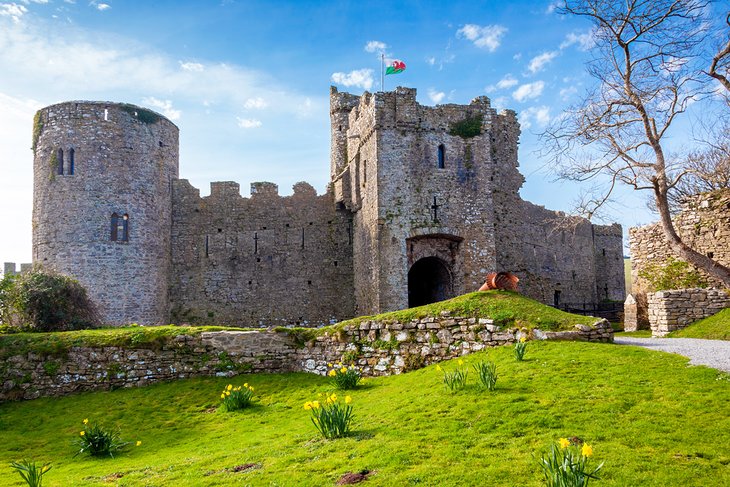
Surrounded by stunning red sandstone cliffs, the village of Manorbier is well worth a visit due to the medieval Manorbier Castle (1275-1325). Standing alone on a hill, this spectacular fortress offers tremendous views and paints quite a romantic picture as you walk its many excellent trails.
For a unique accommodation experience, book the old stone house built within the castle walls. It and the castle also serve as a popular wedding backdrop.
The town itself was the birthplace in 1146 of Giraldus Cambrensis, one of the most brilliant thinkers of the Middle Ages. As Archdeacon of Brecon, he was the main protagonist of an independent Welsh Church, adviser on Irish affairs.
He was also known as an excellent orator and famously accompanied Archbishop Baldwin of Canterbury on his tour of Wales to gain support for the Third Crusade. This journey resulted in his best known work, The Itinerary of Wales, in which he describes Manorbier as the most charming place in all of Wales.
Address: Manorbier, Tenby, Pembrokeshire, Wales
Official site: https://manorbiercastle.co.uk
St. Davids Cathedral
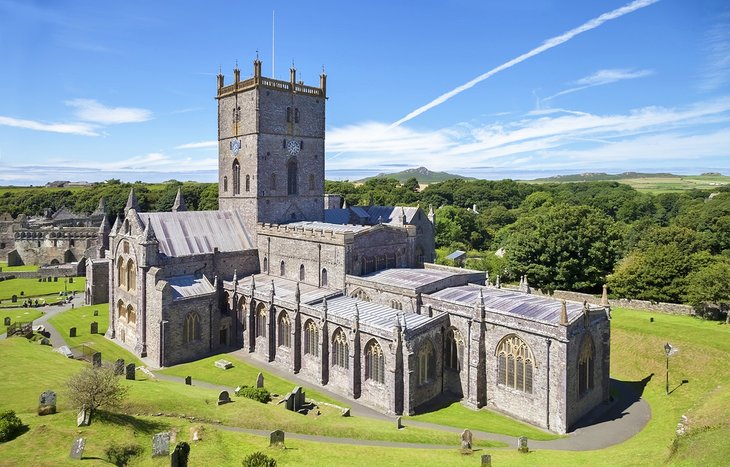
The cathedral in tiny St. Davids, Britain's smallest city, was built in a hollow to escape the attentions of marauders. Consequently, from the immediately surrounding area, only the tower can be seen. A wall enclosed the precincts of the cathedral in the 13th century, and the structure itself was largely redecorated in the 14th century.
Highlights of a visit include seeing its 13th-century tower, the Lady Chapel, and the spectacular west front, given its present form between 1862 and 1878. While the exterior of the cathedral appears rather somber and austere, the rich variety of forms within its triple-aisle Norman interior creates an overwhelming effect, particularly the beautiful 15th-century Irish oak ceiling.
Of the four arches supporting the tower, the one on the west side dates from before the collapse of the original tower. The three others from after 1220. The choir-stalls, with filigree misericords, along with the bishop's throne, date from the second half of the 15th century. The relics contained in a small chest in the Trinity Chapel are probably those of St. David, although his shrine in front of the high altar is empty.
An unusual quirk is the building's slightly sloping floor, which you'll notice almost immediately upon entry. Guided tours are available and although free, donations are always appreciated.
Address: The Pebbles, St. Davids, Haverfordwest, Pembrokeshire, Wales
Official site: www.stdavidscathedral.org.uk
Goodwick and Fishguard
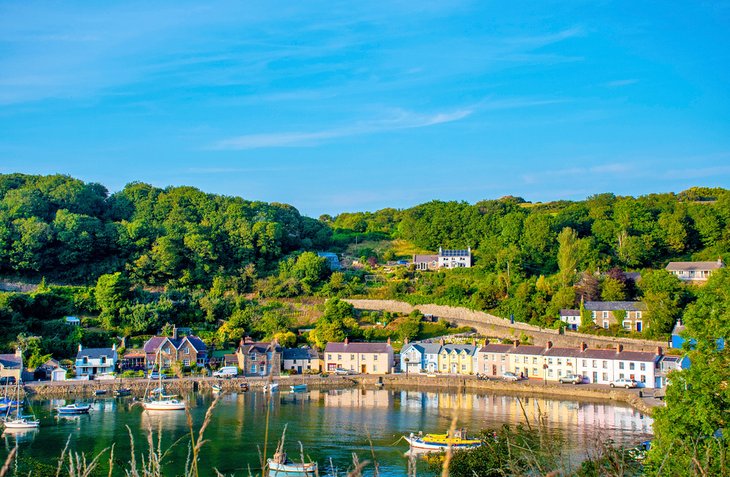
Located in Fishguard Bay are the twin towns of Goodwick and Fishguard. In the old part of Fishguard, you'll find a huddle of small houses surrounding the beautiful harbor, Abergwaur, made famous after Dylan Thomas' Under Milk Wood was filmed here in 1971.
It is from here that ferries depart to Rosslare in Ireland. It's also a popular spot for tourists to shop for Welsh handicrafts and other goods in the boutiques and shops of Lower Town. The ruins of a medieval castle dominate the tip of the promontory.
Walkers are attracted to the location for its many pleasant coastal paths with their fine views, especially around the Pen Caer peninsula with its many prehistoric remains, Iron Age forts, and chambered tombs.
Cardigan and the National Wool Museum
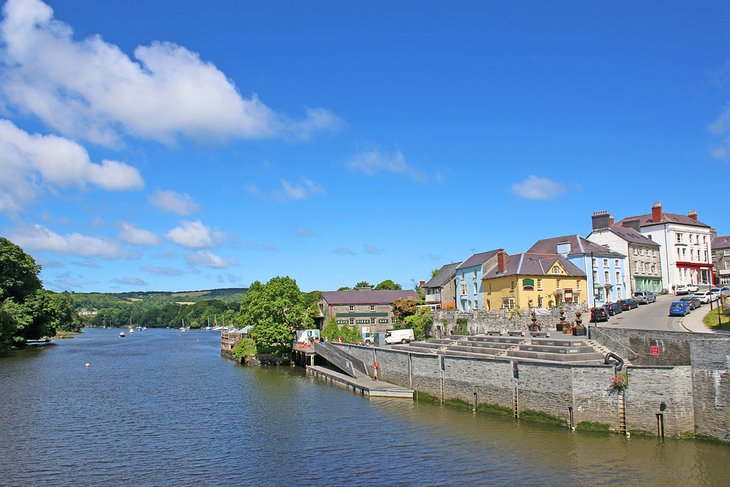
Cardigan is a busy little market town located on the banks of the Teifi (pronounced Tivi) river, about 3.2 kilometers above its mouth. It's a quaint place to stop and explore, with tourist attractions including the six-arched, 18th-century bridge that spans the river.
The river itself is renowned among anglers for its salmon and trout. Nearby are two round towers dating from the 13th-century Cilgerran Castle, each of which offer great views over the river.
The Teifi Valley is also the traditional base of the Welsh wool trades and is home to the Museum of the Welsh Woolen Industry. Here, you'll find many interesting displays related to the combing and spinning of wool, along with traditional weaving techniques and patterns. There are also displays focusing on contemporary products available from Welsh mills.
Address: Dre-Fach Felindre, Llandysul, Carmarthenshire, Wales
Official site: www.museumwales.ac.uk/wool/
Caldey Island
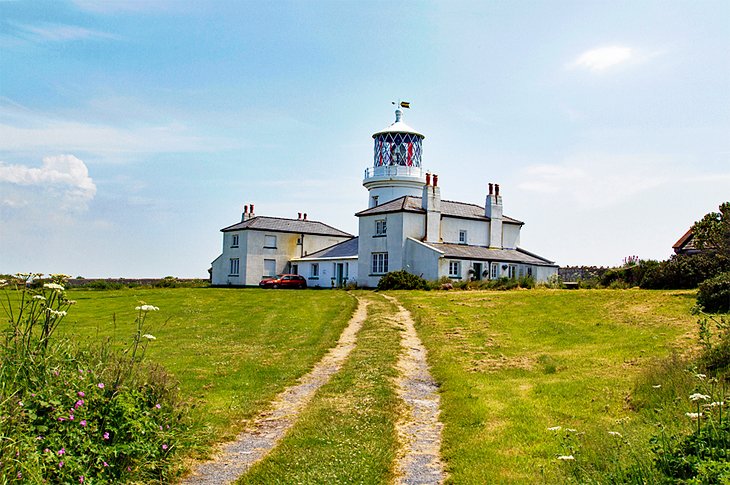
If your idea of fun includes doing a little island hopping, be sure to consider taking an excursion to lovely Caldey Island. Located just over a half mile from the mainland near Tenby, the island can trace its history back some 1,500 years. During this time, it served as one of the most important of holy islands in Wales.
The island is, to this day, home to a group of 40 or so Trappist monks, who produce a variety of purchasable goods, including cheese, chocolates, and products like perfume made from locally sourced lavender.
It's also a popular boat trip for its diverse wildlife, which includes a large colony of cormorants. There's also a small museum in the post office worth visiting, as the island has its own stamps, which make great souvenirs.
Other notable landmarks include the 13th-century Church of St. Illtyd, and Caldey Lighthouse, built in 1828, which can easily be accessed from the many pleasant trails and paths that circle the island.
Official site: https://caldeyislandwales.com


